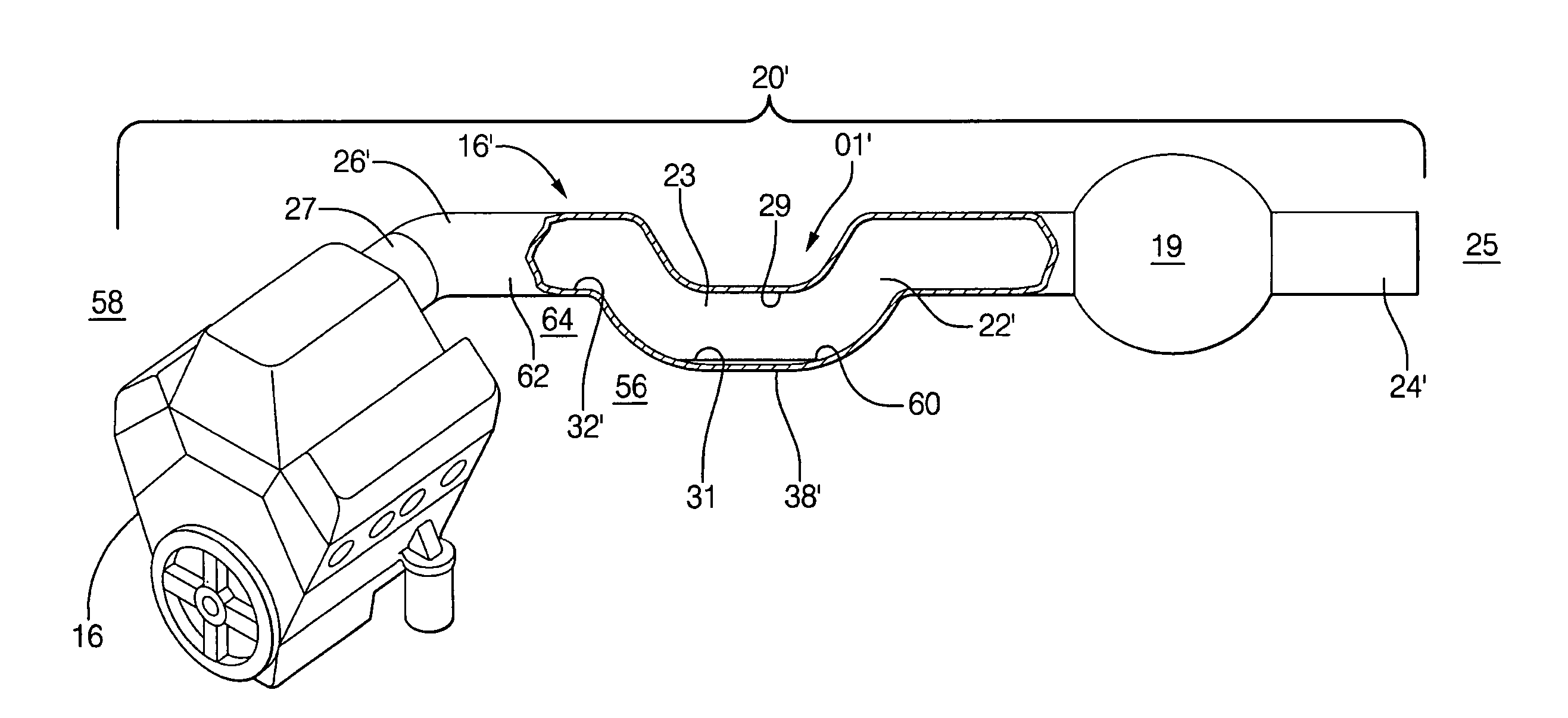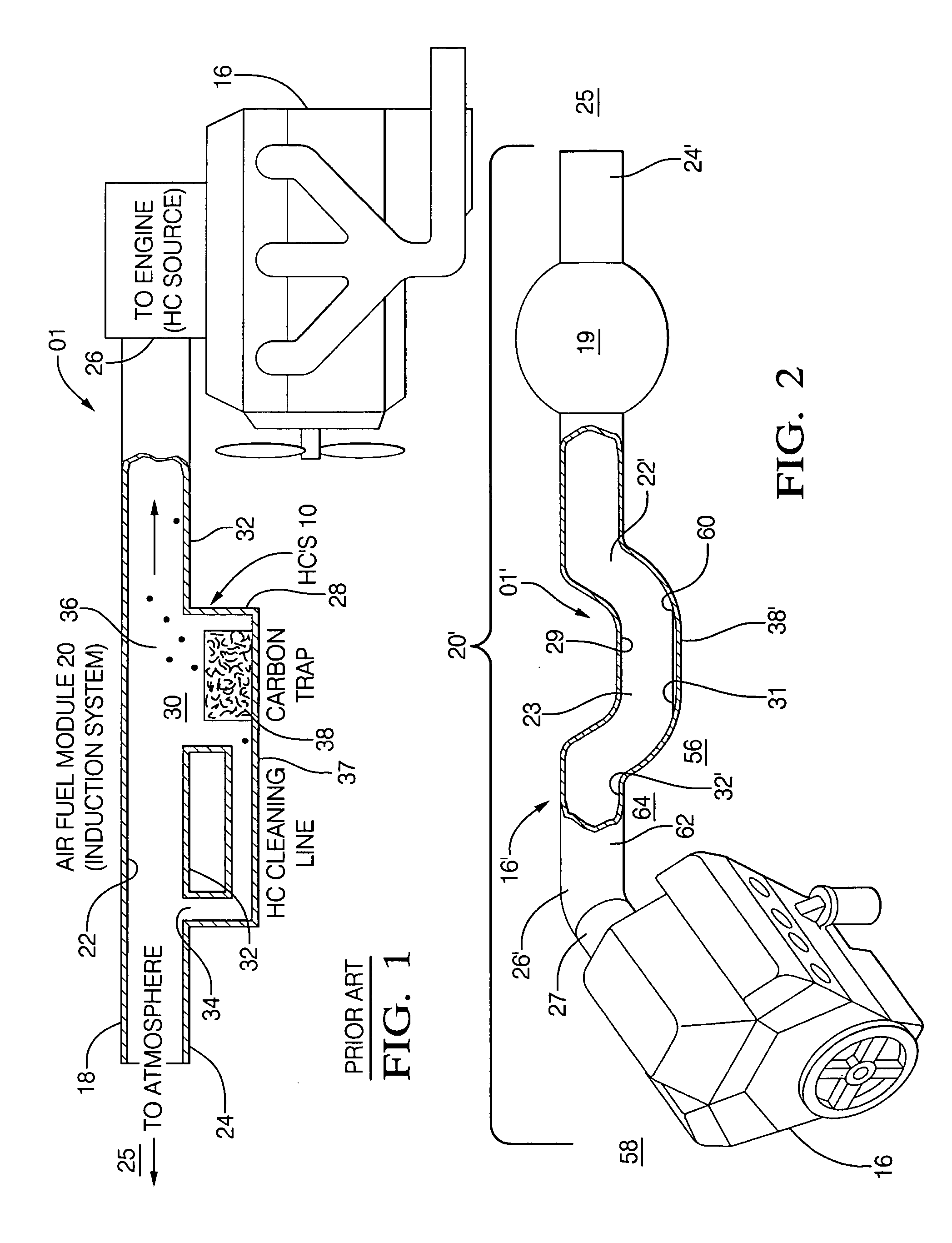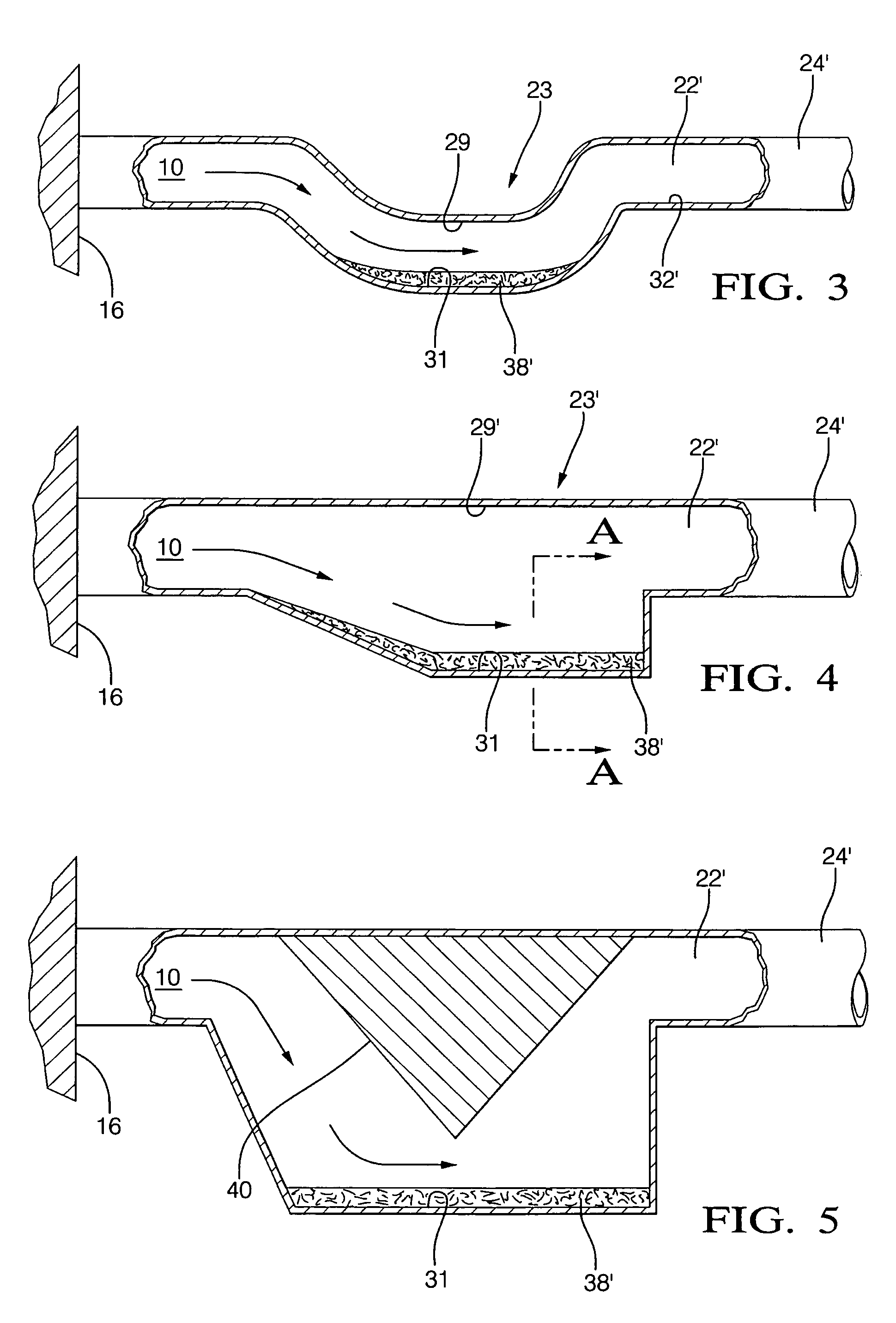Engine intake hydrocarbon trap system
- Summary
- Abstract
- Description
- Claims
- Application Information
AI Technical Summary
Benefits of technology
Problems solved by technology
Method used
Image
Examples
embodiment 01
[0039] Referring to FIG. 3, upstream flow of HC vapors 10 from engine 16 is directed downwards into portion 23 by the gravitational relationship of portion 23 to main intake passageway 22′. This flow direction urges the HC vapors toward medium 38′ which is distributed along a region of bottom wall 31. In contrast to prior art embodiment 01, the entire flow of air and HC vapors in passageway 22′ is made available to the medium. Preferably the cross-sectional area of portion 23 is sized to accommodate the thickness of medium 38′ such that portion 23 presents no significant restriction to the flow of air to the engine during operation thereof.
[0040] Referring to FIG. 4, the upper wall 29′ of portion 23′ is continuous with the upper wall of main intake passageway 22′; this configuration provides a straighter path for intake air while also providing a low region for accumulation of HC vapors but at a cost of less direction for the vapors when the engine is off. This configuration is appl...
embodiment 23
[0046] The medium configurations 38-1,38-2,38-3 are shown for simplicity in respect to embodiment 23′ shown in FIG. 4 but of course these medium configurations are equally applicable to all configurations of trap portions 23, 23′, 23″.
[0047] Referring again to FIG. 2, preferably passageway 23 and medium 38′ are located in an area 56 of the engine compartment 58 to conduct the hotter temperatures of the gases contained in downstream end 26′ of intake passageway 22′ away from medium 38′ during periods of engine shutdown such that temperature 60 of medium 38′ is lower than temperature 62 of the gases within passageway 22′ to thereby improve the efficiency of hydrocarbon adsorption. FIG. 9 shows embodiment 38-3′ wherein finned heat sink projections 64 extend from bottom wall 31 and / or side walls 42 to transfer heat away from sheet 54 and toward lower temperature 64 in area 56. It is understood that the use of finned heat sink projections 64 for improving the efficiency of cooling is equ...
PUM
 Login to View More
Login to View More Abstract
Description
Claims
Application Information
 Login to View More
Login to View More - R&D
- Intellectual Property
- Life Sciences
- Materials
- Tech Scout
- Unparalleled Data Quality
- Higher Quality Content
- 60% Fewer Hallucinations
Browse by: Latest US Patents, China's latest patents, Technical Efficacy Thesaurus, Application Domain, Technology Topic, Popular Technical Reports.
© 2025 PatSnap. All rights reserved.Legal|Privacy policy|Modern Slavery Act Transparency Statement|Sitemap|About US| Contact US: help@patsnap.com



